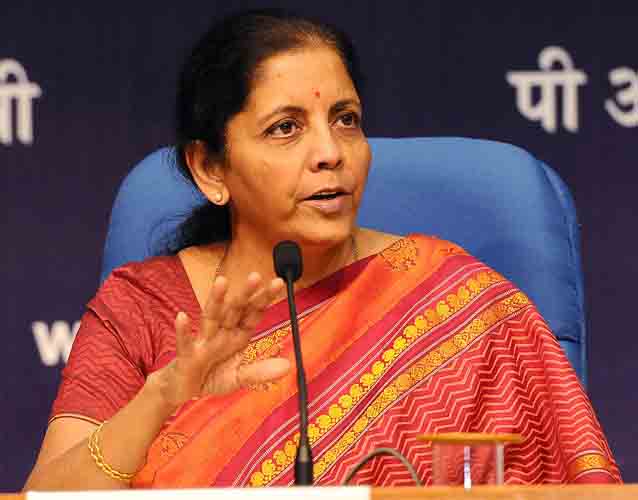Our regulators are nasty enough to make lives of entrepreneurs miserable but not effective enough to check scams, irregularities in their respective sectors.
We have done our bit, now the ball is in your court—this seems to be the Narendra Modi government’s message to corporate India. The message must be received in all seriousness, for Finance Minister Nirmala Sitharaman’s fiscally responsible Budget. Despite demands for an expansionary Budget, she chose prudence over the Keynesian dogma and relied on private spending instead.
In a post-Budget interaction with the Confederation of Indian Industry, she rightly said, “I don’t think in today’s condition it can be just government spending which can pull economy towards growth and we want the industry to stop hesitating… I strongly believe industry today will have to come out of hesitation which you have.”
Sitharaman said that the government’s biggest priority was to keep the macroeconomic stability unchanged. She and the government deserve praise for doing that, for there was the opportunity, and surely the pretext, of augmenting expenditure. “The Central government debt that has been the bane of our economy got reduced, in March 2019, to 48.7% of GDP from a level of 52.2% in March 2014,” she said in her speech. Economic growth in the current fiscal will be low, but the government debt-to-GDP ratio is not expected to cross 50%. This was the reason that several experts and industry representatives wanted her spend more. Thankfully, she resisted the temptation of pump priming the economy. For it is easier to increase government spending but very difficult to check it.
The Finance Minister has increased the fiscal deficit for 2019-20 to 3.8%, a rise of 0.4% from the Budget estimate. For 2020-21, it has been pegged at 3.5%. “This estimation is consistent with government’s abiding commitment to macroeconomic stability,” she said, adding that the target deviations for both fiscals are consistent with the Fiscal Responsibility & Budget Management Act.
“The government has done its bit on simplifying and cutting corporate tax rates and now expects the industry to be the engine to pull the economy forward as the government spends is not sufficient,” she said at the CII.
While must India Inc appreciate the actions like deficit control and corporate tax cuts, the government should also understand the position of businesspersons. Fiscal prudence and low tax rates are a necessary condition to attract investment, but they are not the sufficient condition. Fiscal, monetary, and policy measures have to be in harmony to enthuse industry to invest in the country. Corporate tax rates are extremely competitive. The Reserve Bank of India slashed interest rates by 135 basis points last year. It is on the policy front that we fail.
It was in its second term that the Modi government cut corporate tax rates, but did not follow it with reducing state presence in the economy and expediting reforms. Public sector banks and undertakings (PSBs and PSUs) are yet to be privatised. US President Donald Trump also slashed tax rates but he deregulated the economy along with the cuts.
In his State of the Union address, “Three years ago, we launched the great American comeback. Tonight, I stand before you to share the incredible results. Jobs are booming, incomes are soaring, poverty is plummeting, crime is falling, confidence is surging, and our country is thriving and highly respected again. Since my election, we have created 7 million new jobs—5 million more than government experts projected during the previous administration. The unemployment rate is the lowest in over half a century.”
He also talked about re-industrialisation. “After losing 60,000 factories under the previous two administrations, America has now gained 12,000 new factories under my administration, with thousands upon thousands of plants and factories being planned or being built.”
Further, median household income under him rose about $7,000 in three years, while under eight years of Obama it went up $975 and eight years of President Bush, $400.
These are real achievements which the pathologically anti-Trump media and liberals have been unable to refute, so they have resorted to attributing these feats to the supposedly good work done by the Obama administration.
On the other hand, neither corporate tax rate cuts nor the Modi government’s emphasis on infrastructure has attracted investment, domestic or foreign. The reasons are obvious. First, regulation has not decreased but increased. The government’s still plays a major role in the economy.
Second, regulators in our country are nasty enough to make the lives of entrepreneurs miserable but not effective enough to check scams, irregularities, etc., in their respective sectors.
Third, powers that be have the mindset that they can steer the course of the economy or its sectors as per their own wish. The fact, however, is that the economy is guided by market dynamics, not by the whims and fancies of the high and mighty. The Trump administration is free from this malaise.
Fourth, Trump doesn’t have ministers who insult wealth creators and threaten to “bulldoze” the auto sector.
The Finance Minister has her part by reining in the fiscal deficit and, earlier, slashing corporate tax rates. More than industry, her own ministerial colleagues and mandarins executing economic policy have to get their act together.
Ravi Kapoor is a freelance journalist.

